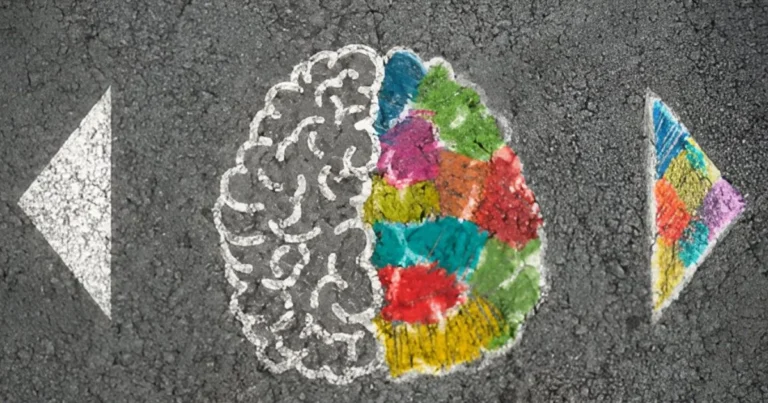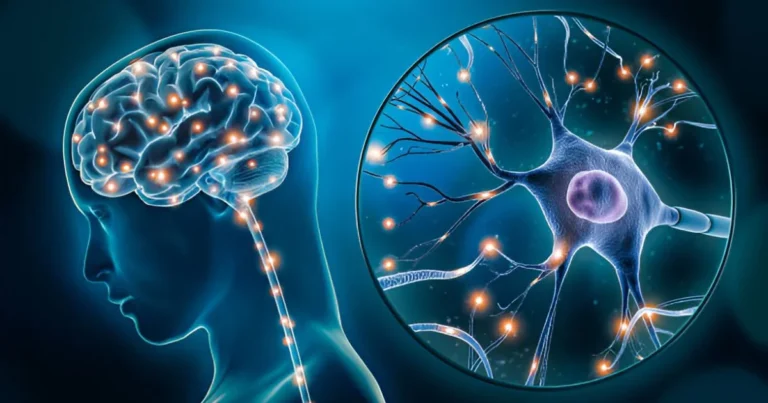The brain rot effect: Instant content and the erosion of our mental functions
Human history is intricately linked to the evolution of our communication tools. We have moved from slow oral transmission to written narratives, and more recently, to digital media, which promise boundless access to knowledge. However, this evolution, far from being a neutral development, profoundly alters the way we think and perceive the world. Since the rise of social networks and instant content, a subtle but pervasive phenomenon has emerged: the gradual erosion of our attention span and our ability to think deeply.
In the whirlwind of the digital age, our brains are overwhelmed by a constant influx of rapid information designed to stimulate our reward circuits. Brief flashes of content, seconds-long videos, and incessant notifications capture our attention, but they also scatter it. Neuroscience explains this through the repeated and intense activation of the dopaminergic system, a critical brain pathway that governs motivation and learning. Each new click or scroll acts as a reward, reinforcing the behavior and enticing us to return for more.
Yet, the human brain, with its remarkable plasticity, also has its limits. This relentless pursuit of novelty begins to erode essential cognitive functions such as working memory and emotional regulation. It becomes increasingly difficult to maintain focus on a challenging task or to devote time to deep reflection. Over time, constant exposure to rapid stimuli may impact our synaptic connections, particularly in regions involved in critical thinking, like the prefrontal cortex. Often referred to as the seat of rational decision-making, the prefrontal cortex loses its strength when subjected to repeated distractions. As a result, we become more impulsive and less capable of delaying gratification in pursuit of long-term goals.
🔗 Read also: Who am i online? Rethinking identity in the social media era
The silent war on our minds: the tyranny of infinite scrolling
The term “brain rot” was first coined by Henry David Thoreau in 1854 in his renowned work Walden. Thoreau used it as a metaphor to criticize the decline of intellectual and moral standards in his time, comparing it to the “potato rot” that plagued Europe. After being forgotten for many years, this term has recently resurfaced to describe the detrimental effects of relentless digital content consumption on our mental functioning.
In today’s era of social networks and instant content, “brain rot” serves as a powerful metaphor for the impact of spending endless hours scrolling through streams of images, videos, and text on screens. This phenomenon, known as doomscrolling or infinite scrolling, traps our brains in a cycle of instant gratification, where each new piece of content triggers a dopamine rush. In the short term, this provides a fleeting sense of satisfaction. However, in the long term, the consequences are far more profound, potentially undermining our ability to think critically, reflect deeply, and engage meaningfully with the world around us.
The human brain, designed to process information in a linear and hierarchical manner, finds itself inundated with a multitude of unstructured stimuli. This overload impairs our ability to sustain attention, delve into our thoughts, and even retain information.
Studies have shown that areas of the prefrontal cortex, which are crucial for critical thinking and planning, experience a form of fatigue when subjected to repeated distractions. This cognitive “rot” manifests not only as lapses in attention but also as an increasing difficulty in discerning what truly deserves our time and energy. As we jump from one digital stimulus to another, our ability to prioritize, plan, and engage in sustained thought becomes compromised.
🔗 Explore further: Procrastination: The inner battle that shapes our actions
The constant scrolling also exacerbates our emotional vulnerability. The stark contrast between light, entertaining content and anxiety-inducing news, often amplified by algorithms, disrupts our emotional regulation. Negative emotions accumulate without the necessary time or space to process them, leading to a growing sense of distress. This cycle of emotional disruption erodes our well-being as we continue to seek the next “dose” of digital distraction, further numbing our capacity for emotional resilience.
What Thoreau decried in the 19th century resonates disturbingly in our current reality. While in his time “brain rot” was a critique of declining cultural values, today it serves as a warning about how our digital environment reshapes our cognitive processes and undermines our mental health.
Fragmented minds: The disastrous effects of constant digital distractions
A fascinating study conducted by Christoph M. Michel at the University of Geneva, published in the scientific journal NeuroImage, explored a key concept in neuroscience: EEG microstates. These “microstates” represent brief, millisecond-long snapshots of brain activity, where a specific neural network temporarily dominates. They are essential for understanding how the brain organizes information, shifts between tasks, and maintains flexibility when responding to external demands.
🔗 Discover more: Reprogramming the mind: The neuroscience behind everyday habits
The study shows that these microstates are not random; rather, they function as fundamental building blocks of thought. They allow the brain to juggle different types of processing, whether analyzing a problem, focusing on a stimulus, or integrating memories. However, continuous exposure to distractions, such as endless scrolling on social networks or constant notifications, disrupts this natural process. Repeated interruptions overactivate certain neural networks while neglecting others, fragmenting our attention and preventing the brain from remaining “stable” long enough to process complex thoughts or commit them to long-term memory.
This discovery is crucial for understanding why many people feel mentally scattered after long periods spent online. By altering the duration and sequence of EEG microstates, these digital habits lead to cognitive fatigue, difficulty concentrating, and a diminished ability to think deeply. It’s as if our brain, designed to process information in an organized and in-depth manner, is forced to operate in a “channel-surfing” mode, rapidly jumping from one fragmented thought to the next without the focus necessary to achieve sustained insight or meaningful reflection.
This fragmentation not only impacts our ability to concentrate but also hinders our capacity to engage in complex problem-solving, long-term planning, and even emotional processing, reinforcing the silent cognitive decline fostered by constant digital distraction.
By altering the duration and sequence of EEG microstates, these digital habits lead to cognitive fatigue, difficulty concentrating, and a diminished ability to think deeply.
Recent studies reveal a gradual yet profound transformation in our cognitive patterns. Repeated exposure to short, often superficial, and fragmented information, common in our digital environment, does not merely alter the way we think; it also reshapes the structure of our neural circuits. With each click, each swipe, or quick content check, our brain adapts. These digital habits reinforce certain synaptic networks, promoting quick reflexes and immediate responses, while weakening those that support slow, deliberate thinking. The neural pathways that fuel critical thought, sustained attention, and long-term memory become less robust, making it harder for us to engage in deeper cognitive processes that require concentration, reflection, and complex problem-solving. As a result, our ability to think critically, plan strategically, and retain information over time is increasingly compromised.
🔗 Read also: Repressed and reloaded: Psychoanalysis in the age of social media
Finding clarity in chaos
This insidious erosion of our cognitive functions does not stop at the individual level; it also extends to our social relationships and collective dynamics. As our ability to sustain attention diminishes, our interactions begin to adapt, often to their detriment. Conversations that were once slow and rich with nuance and multiple meanings are increasingly reduced to brief, superficial exchanges. The depth and quality of communication decline as we become more accustomed to rapid, fragmented interactions. This shift not only affects how we relate to others on a personal level but also shapes the broader social fabric, making it more difficult to engage in meaningful dialogue or to nurture relationships that require sustained attention and thoughtful engagement. As a result, our social connections may weaken, and the capacity for genuine empathy and understanding becomes more challenging.
Social networks, originally designed to unite us, have instead given rise to a shallow form of connection, where the urgency of immediacy often eclipses the value of meaningful engagement.
Social networks, initially designed to unite us, have instead given rise to a shallow form of connection, where the urgency of immediacy often overshadows the value of meaningful engagement. In this environment, public debates have become impoverished. Complex ideas that require patient explanation and rich context collide with a culture of shortcuts and brief formats. Polarized opinions thrive because they align perfectly with the logic of extreme simplification. Ambiguity, crucial for critical thinking, vanishes. We no longer discuss to understand but to react quickly, often with emotional impulses rather than reasoned arguments.
Nicholas Carr, a prominent thinker of the digital age, cautions against the collective implications of this shift. Digital culture, designed to capture our attention instantly, fosters a hyperactive and reactive mode of thinking. But the consequences extend far beyond our ability to focus; they reshape the way we read, write, and interact with others. Carr warns of a future in which deep reading, complex thinking, and critical reflection become privileges reserved for a select few.
The speed at which information spreads only exacerbates this issue. Instant content condenses into slogans or striking images, often stripping messages of nuance. Algorithms, which prioritize engagement above all else, amplify this trend by showcasing the most divisive content. This cycle traps us in informational bubbles, deepening divides rather than fostering shared understanding. These observations urgently call for action. In a world where technology plays a central role, cultivating mindful digital habits is no longer optional, it is essential.
However, all is not lost. Recognizing these mechanisms is a critical step toward change. The human brain, with its remarkable plasticity, can adapt not only to the challenges imposed by technology but also to the solutions we choose to implement. The first key lies in awareness. Understanding that our attention has become a valuable resource exploited by economic models allows us to critically examine how we consume information.
To give our brains time to recover, we can adopt simple yet powerful practices. Intentional moments of disconnection, where we deliberately step away from screens, allow us to reconnect with activities that nurture deep reflection, such as reading, writing, or simply contemplating. These moments offer us the mental space to restore focus and engage in more thoughtful, intentional processing.
The challenge is not to demonize technology but to reintegrate it thoughtfully into our lives. Just as muscles atrophy without use, our ability to think deeply can be rehabilitated through regular practice. By rediscovering intellectual exploration and contemplation, we can relearn to savor nuances and subtleties.
Protecting our cognitive abilities is not only an individual imperative; it is also a collective responsibility. By fostering an environment where reflection, dialogue, and learning take precedence over distraction and polarization, we can strengthen the foundations of a society capable of tackling complex challenges. Only by preserving this precious ability can we continue to innovate, create, and understand the world in all its depth and complexity.
By regaining control over our digital habits, we can slow the relentless tide of scrolling. Setting limits on screen time, prioritizing quality content, and, most importantly, reintroducing moments of intentional disconnection are all strategies to reverse the trend. It’s not about rejecting technology, but learning to master it in order to preserve our cognitive and emotional balance. As Thoreau himself said, sometimes it is necessary to step away from the tumult to regain clarity in our thoughts.
References
Carr, N. (2020). The shallows: What the internet is doing to our brains. W. W. Norton & Company.








